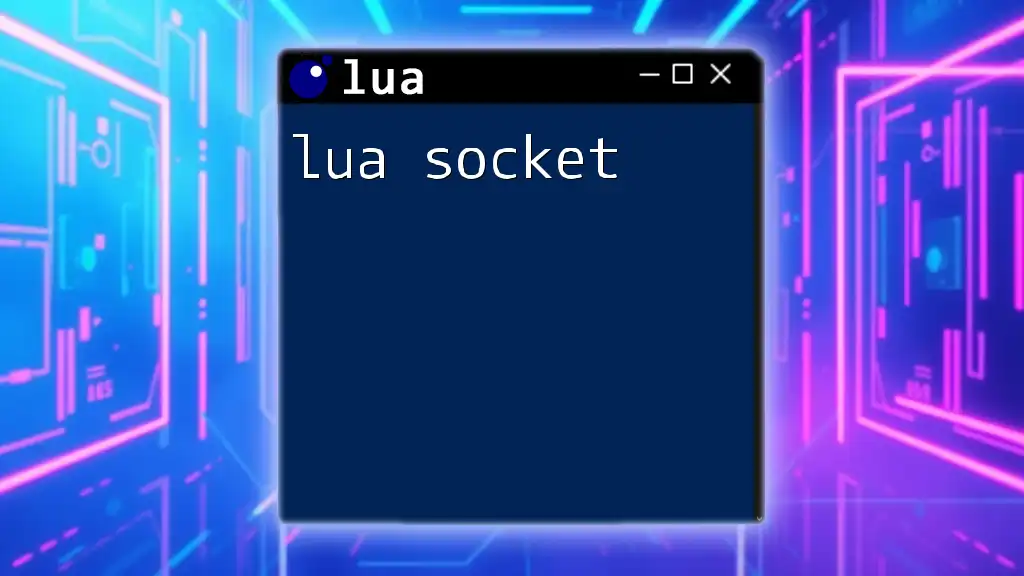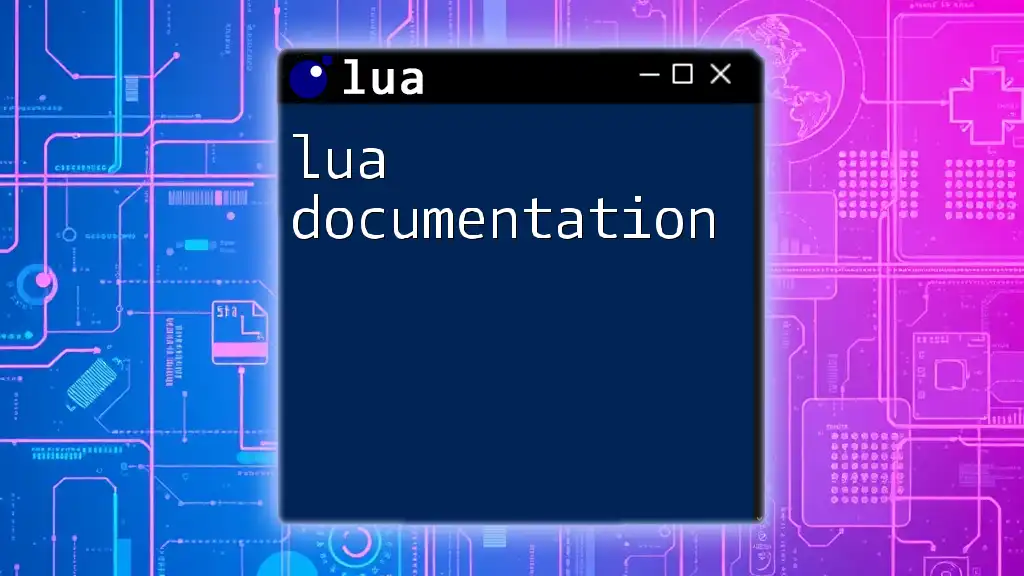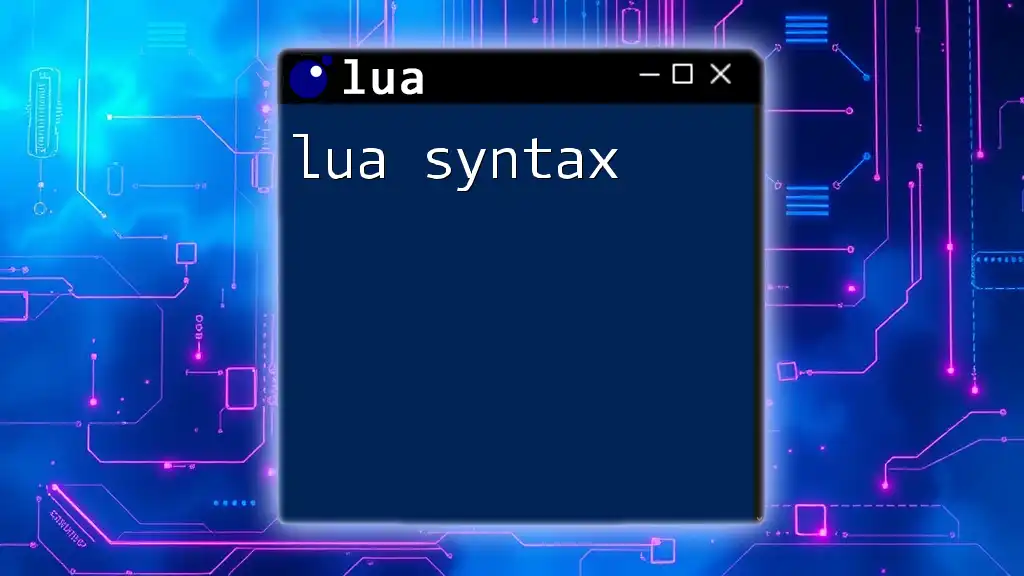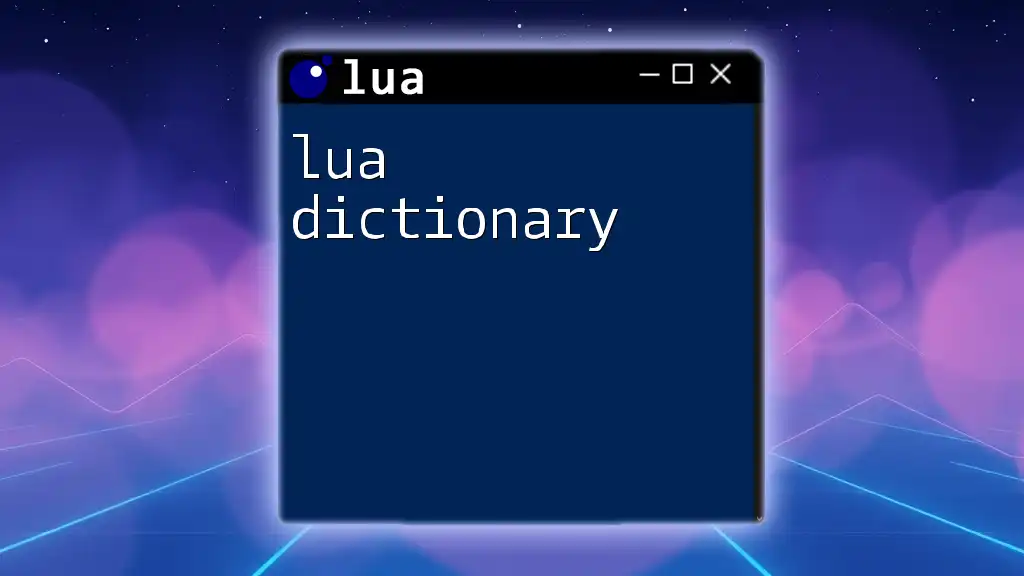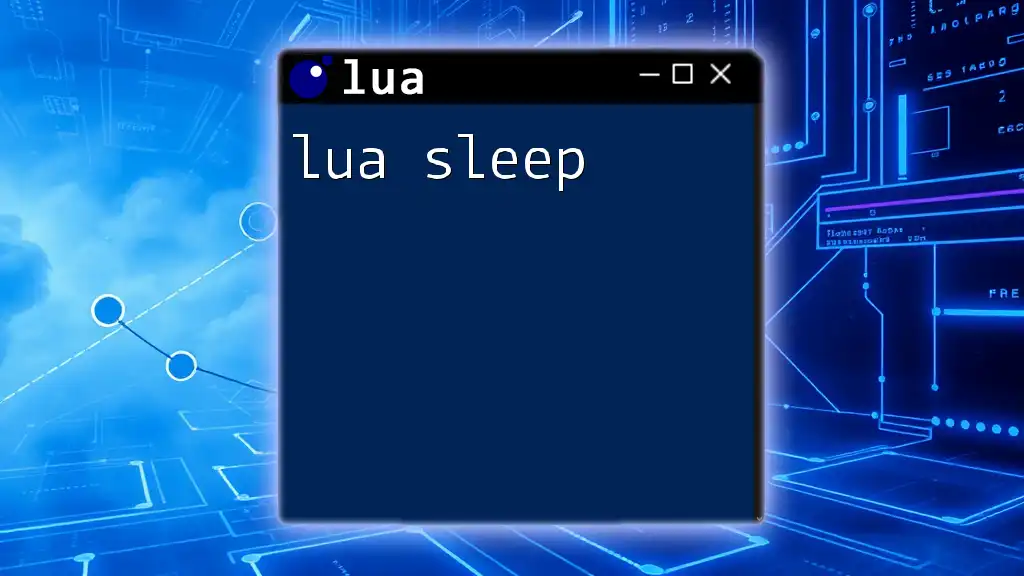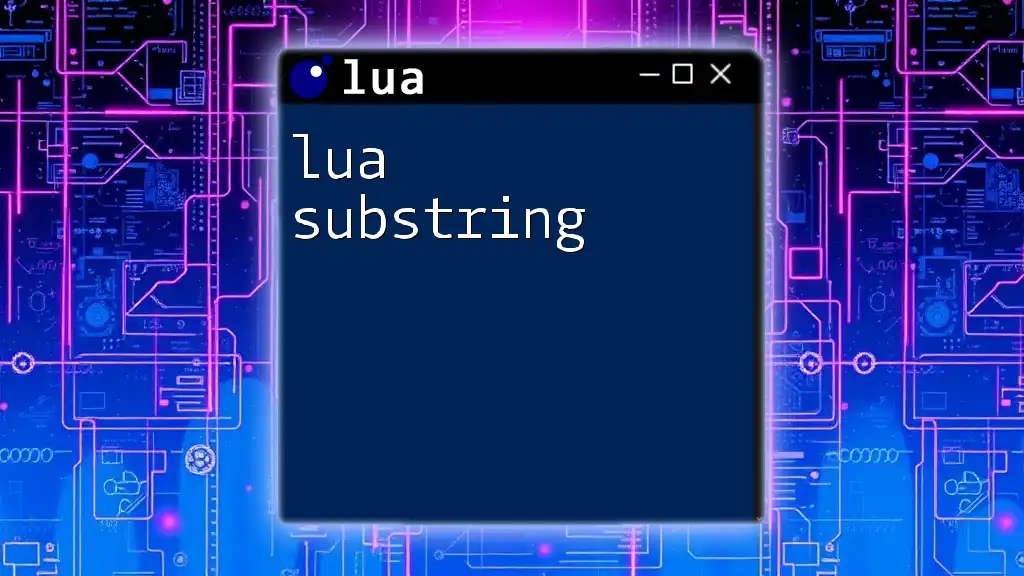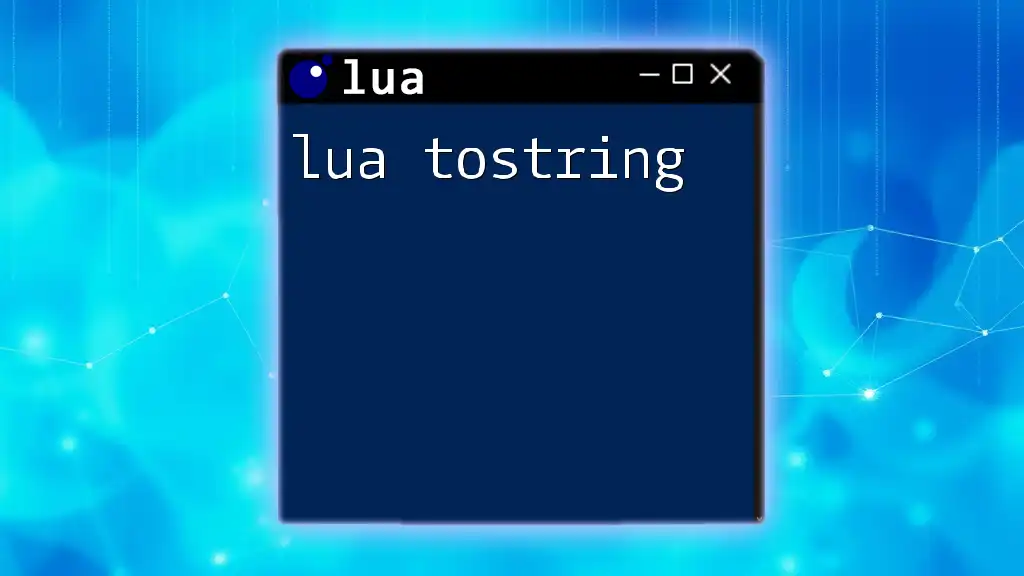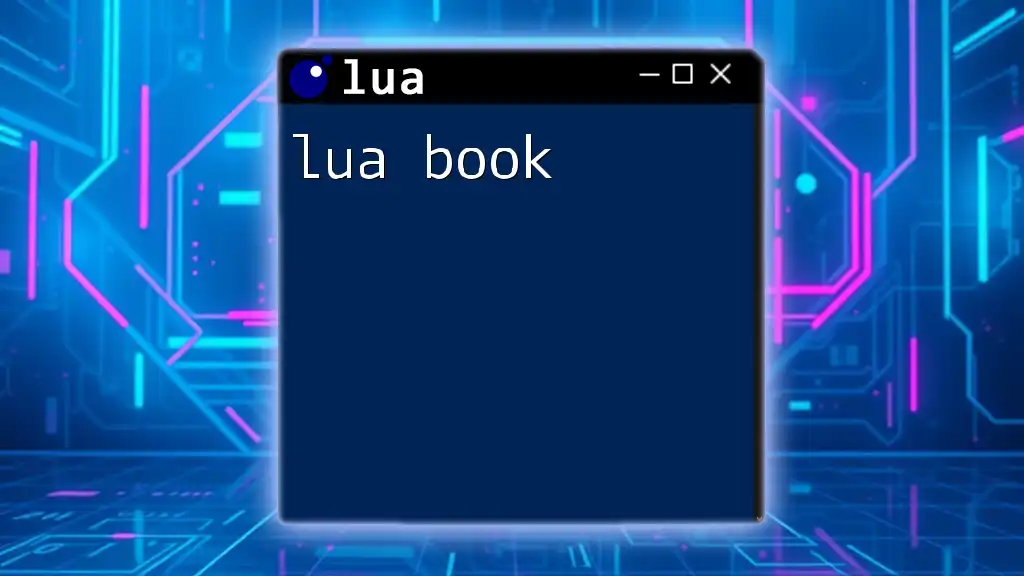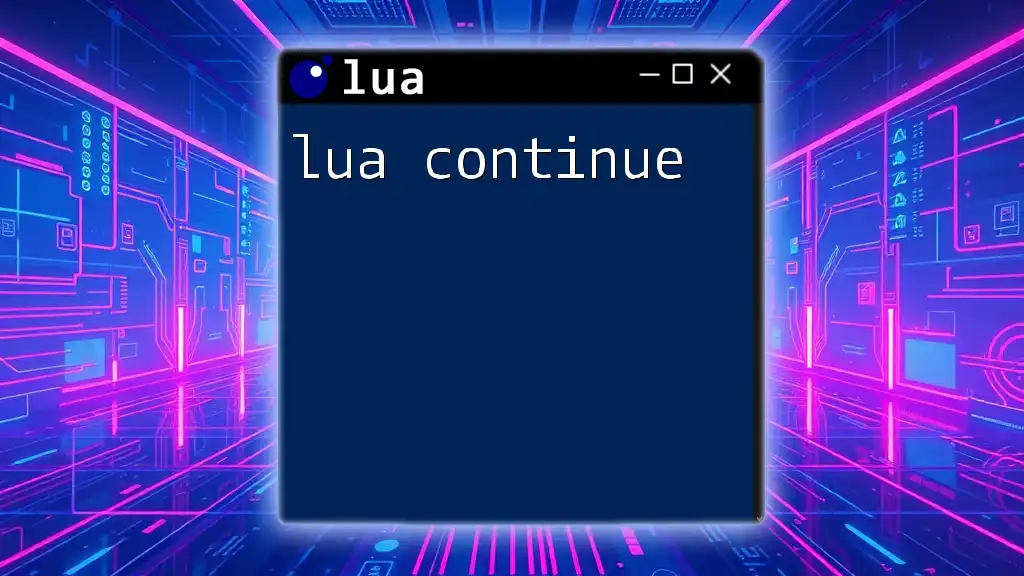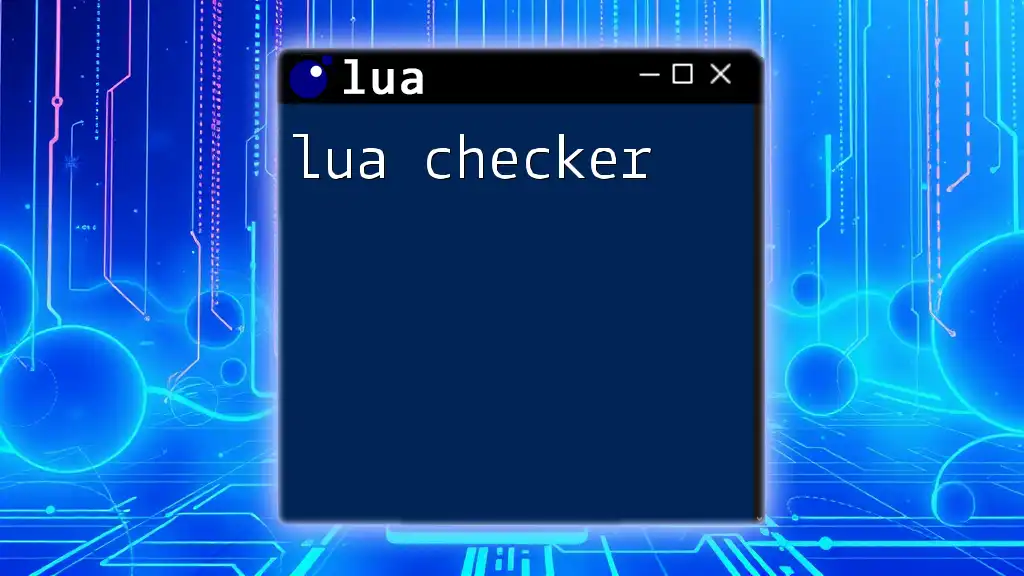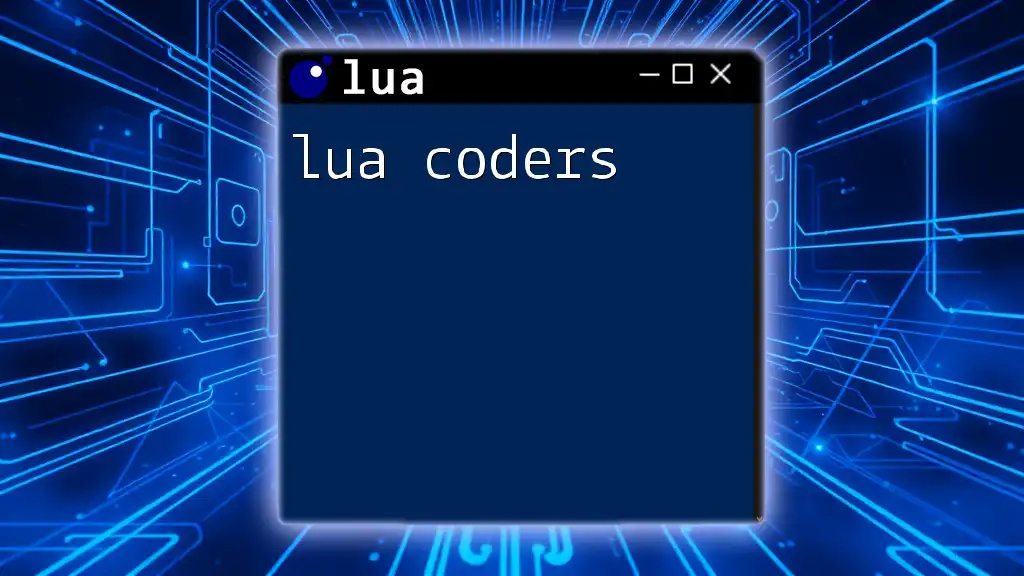Lua sockets provide a simple and efficient way to handle network communication in Lua, allowing for both client and server functionalities.
Here is a basic example of a TCP server using Lua sockets:
local socket = require("socket")
local server = assert(socket.bind("localhost", 12345))
print("Server is running on port 12345...")
while true do
local client = server:accept()
client:send("Hello from Lua server!\n")
client:close()
end
What is Lua Socket?
Lua Socket is a powerful library that facilitates socket programming in the Lua programming language. At its core, it provides a set of TCP and UDP socket operations, allowing developers to create client-server applications, handle network communications, and manage data streaming easily.
Socket programming is essential for building apps that require connectivity over a network, whether it’s for online gaming, web services, or other types of networked applications. Utilizing Lua Socket, programmers can leverage the simplicity of Lua while integrating robust networking capabilities.
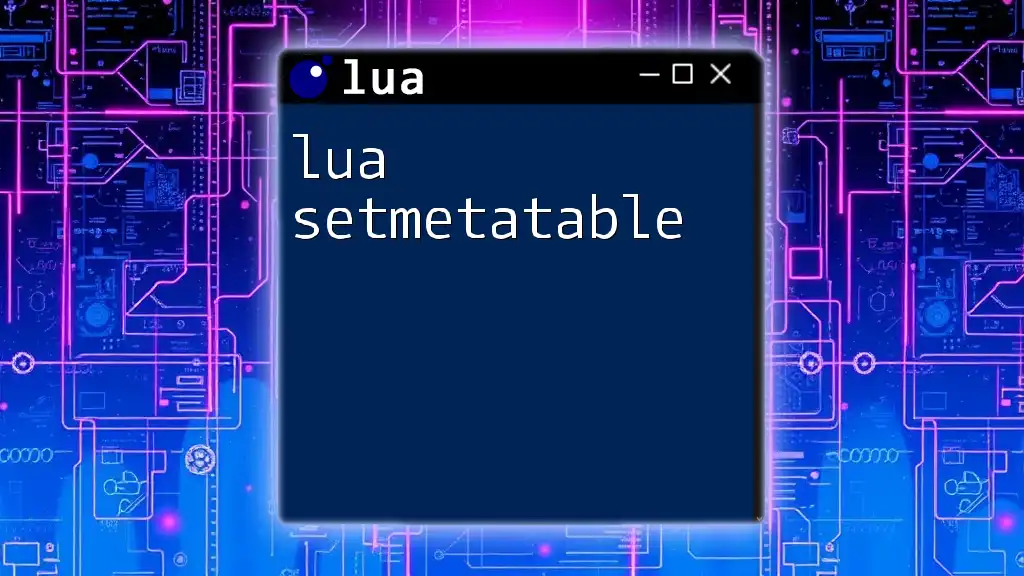
Why Use Lua Socket?
Choosing Lua Socket for your projects comes with several advantages:
- Simplicity: Lua’s straightforward syntax and Lua Socket's clean API make it accessible even for beginners.
- Performance: Lua is known for its efficiency and speed, crucial for network applications where latency can impact performance.
- Flexibility: Lua Socket supports both TCP and UDP protocols, making it versatile for various use cases.
When compared to other programming languages like Python or Java, Lua Socket allows for rapid prototyping and deployment with less overhead, making it an ideal choice for projects that require flexibility and speed.
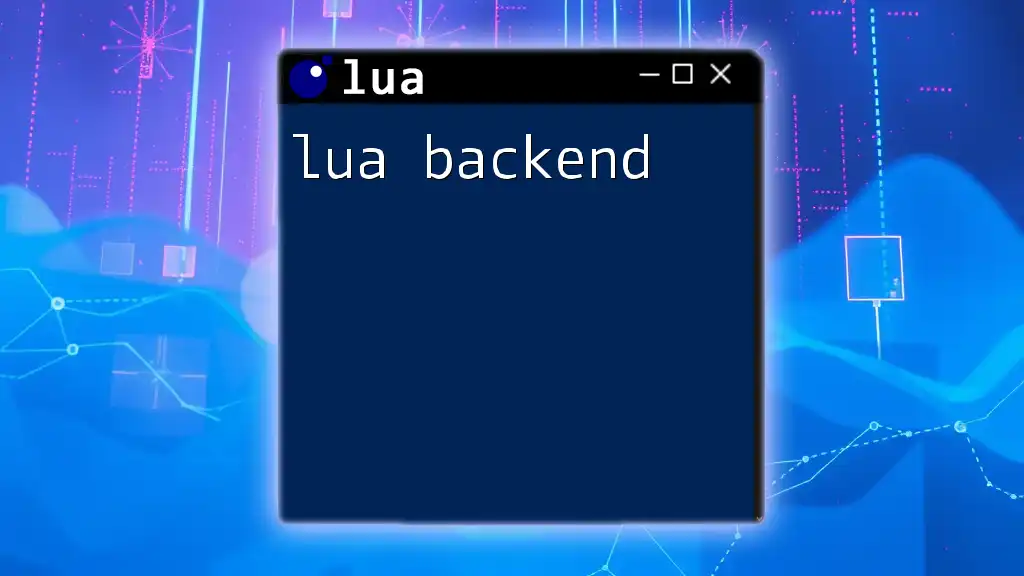
Setting Up Lua Socket
Installing LuaSocket
To get started with Lua Socket, you need to install it first. The installation process varies depending on your operating system.
- Windows: Download LuaSocket from the official LuaRocks repository or directly from the LuaSocket GitHub page. Follow the provided instructions to unpack and include it in your Lua path.
- macOS: Use Homebrew to install Lua and LuaSocket. Run the commands:
brew install lua brew install luarocks luarocks install luasocket - Linux: Install LuaSocket using your package manager. For Debian-based systems, you can run:
sudo apt-get install lua-socket
Make sure to verify your installation by running a simple script to check if the LuaSocket module can be loaded without any errors.
Basic Structure of a LuaSocket Program
LuaSocket comprises various essential modules, primarily:
- socket: Contains core socket functionalities.
- ltn12: Handles data streams efficiently.
- mime: Provides encoding and decoding utilities.
Understanding these modules is crucial as they form the backbone of any Lua Socket application. The basic structure of a LuaSocket program typically starts with a require statement to include the LuaSocket library.
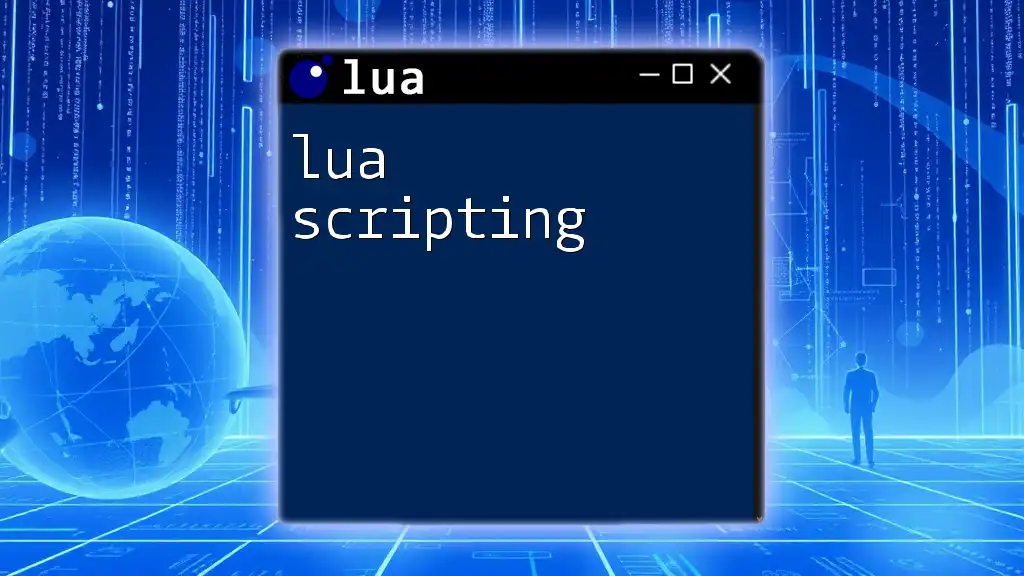
Basics of Socket Programming
Understanding Sockets
In the realm of network programming, a socket serves as an endpoint for communication between two devices over a network. They can either be client sockets, initiated by the user’s application to connect to a server, or server sockets, which wait for incoming connections.
The client-server architecture is fundamental in network design, where one device (the client) requests resources or services from another device (the server). The two main types of sockets are:
- TCP (Transmission Control Protocol): Reliable, connection-oriented protocol that ensures data delivery.
- UDP (User Datagram Protocol): Connectionless and less reliable, suitable for applications where speed is paramount, and occasional data loss is acceptable.
Creating a Simple TCP Client
Developing a basic TCP client is an excellent first step in Lua Socket programming. The following code demonstrates how to create a simple TCP client that connects to a server:
local socket = require("socket")
local client = socket.tcp()
client:connect("localhost", 12345)
client:send("Hello Server!\n")
local response = client:receive()
print("Server response: " .. response)
client:close()
In this example:
- `socket.tcp()`: Initializes a TCP socket.
- `client:connect()`: Attempts to establish a connection to the specified server address and port.
- `client:send()`: Sends a message to the server.
- `client:receive()`: Waits for a response from the server before printing it.
- `client:close()`: Properly closes the socket.
To run this client, ensure a corresponding server is running on the same address and port.
Creating a Simple TCP Server
To respond to clients, a paired TCP server must be set up. Below is a code snippet illustrating a basic TCP server:
local socket = require("socket")
local server = socket.tcp()
server:bind("localhost", 12345)
server:listen(5)
while true do
local client = server:accept()
client:send("Hello Client!\n")
client:close()
end
This example includes:
- `server:bind()`: Binds the server to a specific address and port.
- `server:listen()`: Specifies how many client connections to queue.
- `server:accept()`: Waits for a client connection attempt, returning a client socket.
- `client:send()`: Greets the connected client before closing the connection.
To observe the interaction, launch this server code prior to running any TCP client.
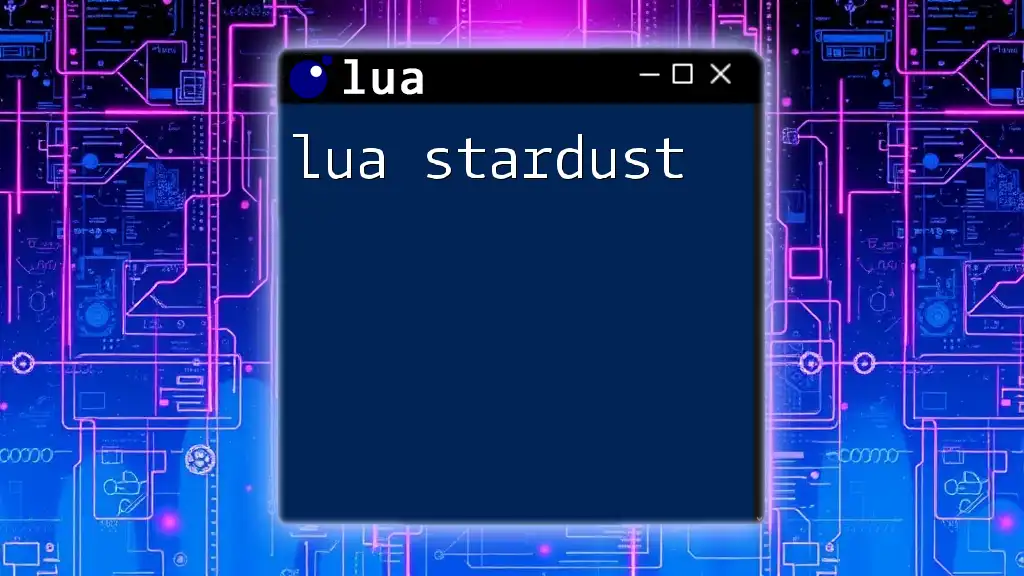
Advanced Socket Programming Concepts
Handling Multiple Clients
For applications that require simulation of real-world scenarios where multiple clients connect simultaneously, handling multiple connections is paramount. Here’s how to do that using `socket.select`:
local socket = require("socket")
local server = socket.tcp()
server:bind("localhost", 12345)
server:listen(5)
local clients = {}
while true do
table.insert(clients, server:accept())
local r, w, e = socket.select(clients, nil, nil)
for _, client in ipairs(r) do
local message = client:receive()
print("Received: " .. message)
client:send("Echo: " .. message .. "\n")
end
end
In this snippet:
- `socket.select()`: Monitors multiple sockets for incoming data and returns those ready for reading.
- `table.insert(clients,...)`: Adds the newly accepted client to the clients table.
- The loop processes each ready client, allowing each to send a response back to the server.
This approach illustrates how server applications can maintain responsiveness while serving multiple clients.
Using UDP Sockets
When creating applications that prioritize speed, such as gaming or real-time services, employing UDP sockets can be beneficial. Below is an example of a simple UDP client:
local socket = require("socket")
local udp = socket.udp()
udp:setpeername("localhost", 12345)
udp:send("Hello UDP Server!")
local response = udp:receive()
print("Server response: " .. response)
udp:close()
Key attributes of UDP:
- Fast-paced communication without connection establishment.
- `udp:setpeername()`: Specifies the target server's host and port directly.
- `udp:send()`: Sends data to the desired server without needing a connection.
Advantages of UDP
While UDP lacks the reliability of TCP, it offers lower latency, making it suitable for applications where speed is crucial. Developers need to consider the necessities of their use cases before choosing between the two protocols.
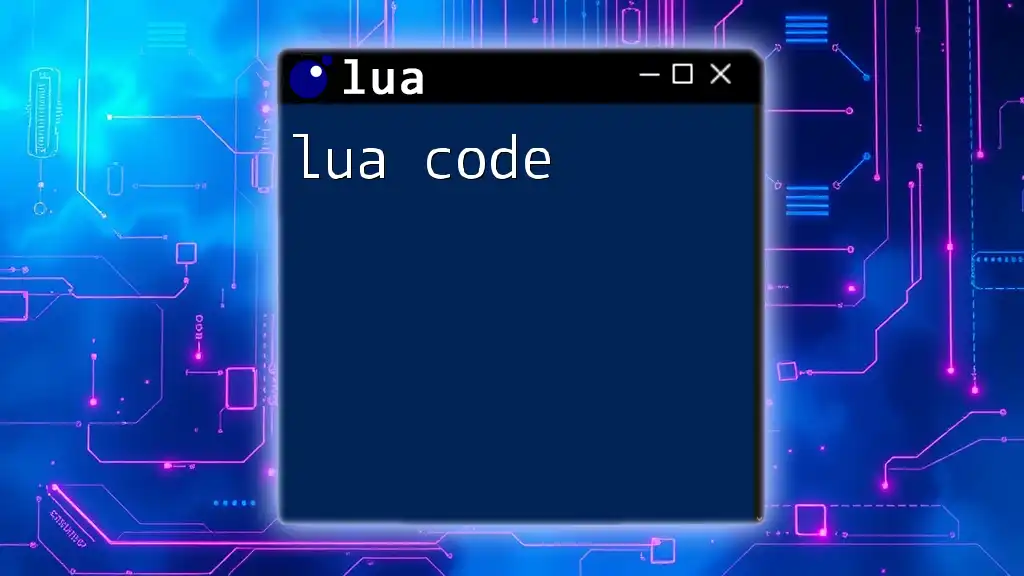
Common Troubleshooting Tips
Connection Issues
When working with sockets, connection failures are common. Here are some typical reasons:
- Firewall Restrictions: Ensure that the designated port isn’t blocked by a firewall.
- Incorrect Addressing: Verify that the server and client are using the correct IP address and port number.
Handling Errors in Socket Programming
Error handling in Lua Socket is critical to developing resilient applications. Here’s how to implement basic error handling:
local status, err = client:connect("localhost", 12345)
if not status then
print("Error connecting: " .. err)
end
This code attempts to connect and captures any errors, allowing you to handle them gracefully rather than crashing your application.
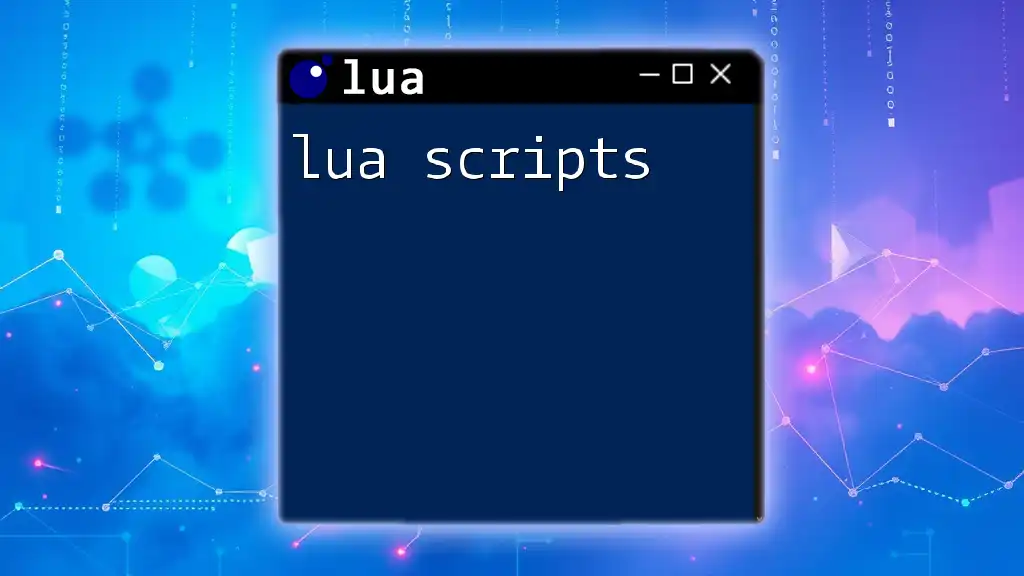
Recap of Key Points
Throughout this guide, we've explored the essentials of using Lua Socket for socket programming. We learned how to create both TCP clients and servers, handle multiple client connections, and leverage UDP for high-speed communication. By integrating the LuaSocket library into your projects, you can unlock the potential of building powerful network applications with minimal complexity.
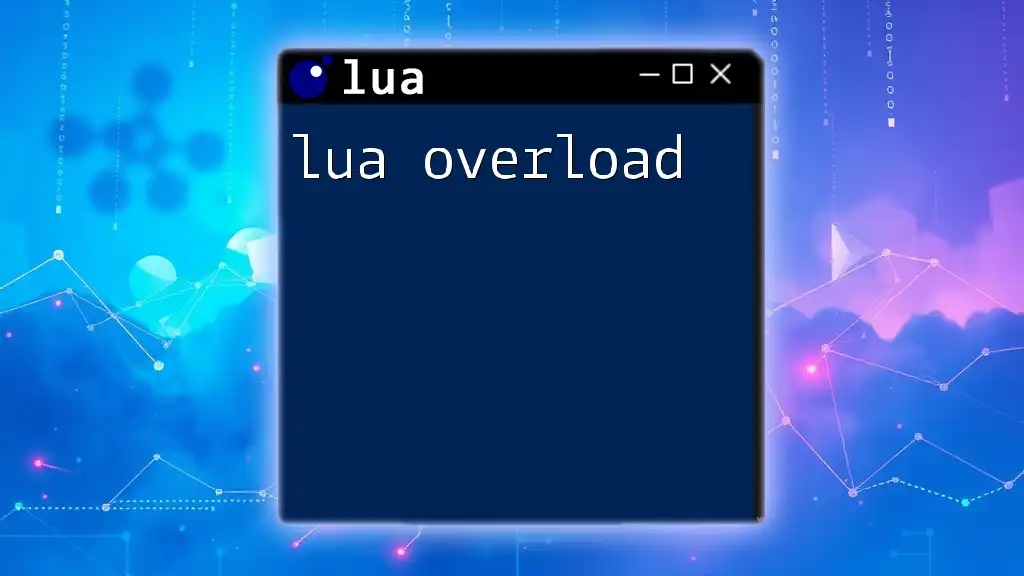
Next Steps for Learning Lua Socket
To deepen your knowledge of Lua Socket, consider exploring additional resources, such as books focusing on Lua programming, online tutorials, and community forums. Engaging with live projects will further enhance your understanding and application of socket programming concepts.
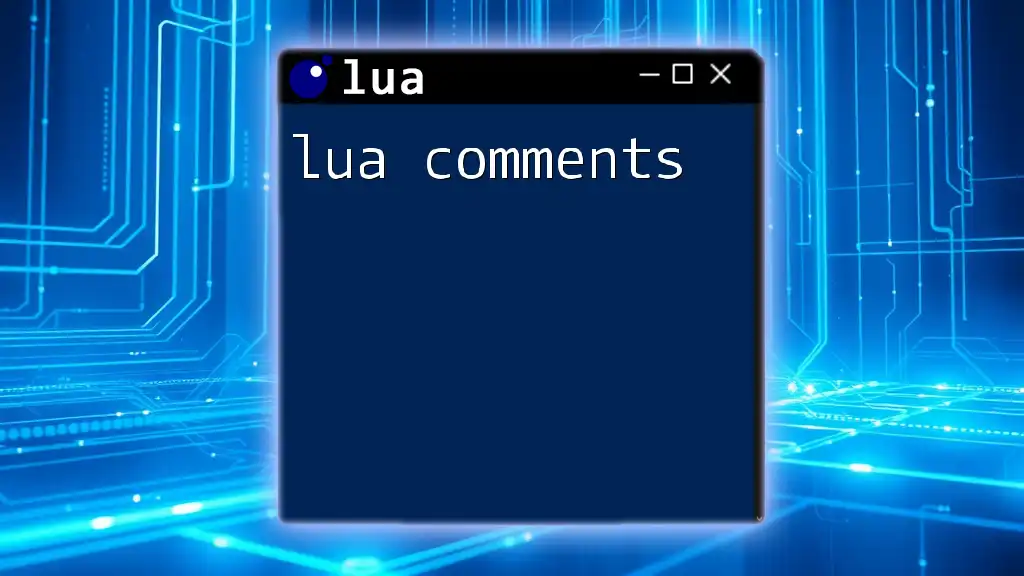
Additional Resources
For comprehensive reference material, visit the official LuaSocket documentation as well as various community-driven content on platforms like GitHub and Stack Overflow. Participation in Lua-related forums can also provide support and inspiration for your journey in mastering Lua Socket programming.
Example projects, like a simple chat application or a real-time data updater, can serve as practical experiences to reinforce learned concepts. Happy coding!

